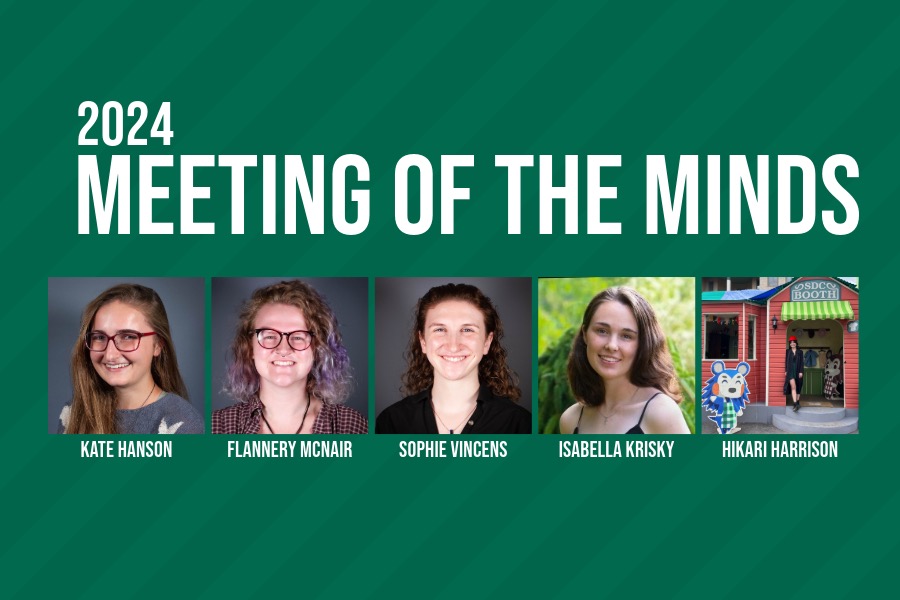
Engineering Innovation at Meeting of the Minds
The Undergraduate Research Symposium, also known as the "Meeting of the Minds," serves as a university-wide celebration of undergraduate research at Carnegie Mellon. The event welcomes diverse research projects, as individuals or research groups, offering a platform to showcase their work to the entire campus community.
Civil and Environmental Engineering was represented by five students sharing research ranging in topics that covered agricultural improvements, rainwater management, Alaska water quality analysis, and project management.
Urban Rainwater Harvesting
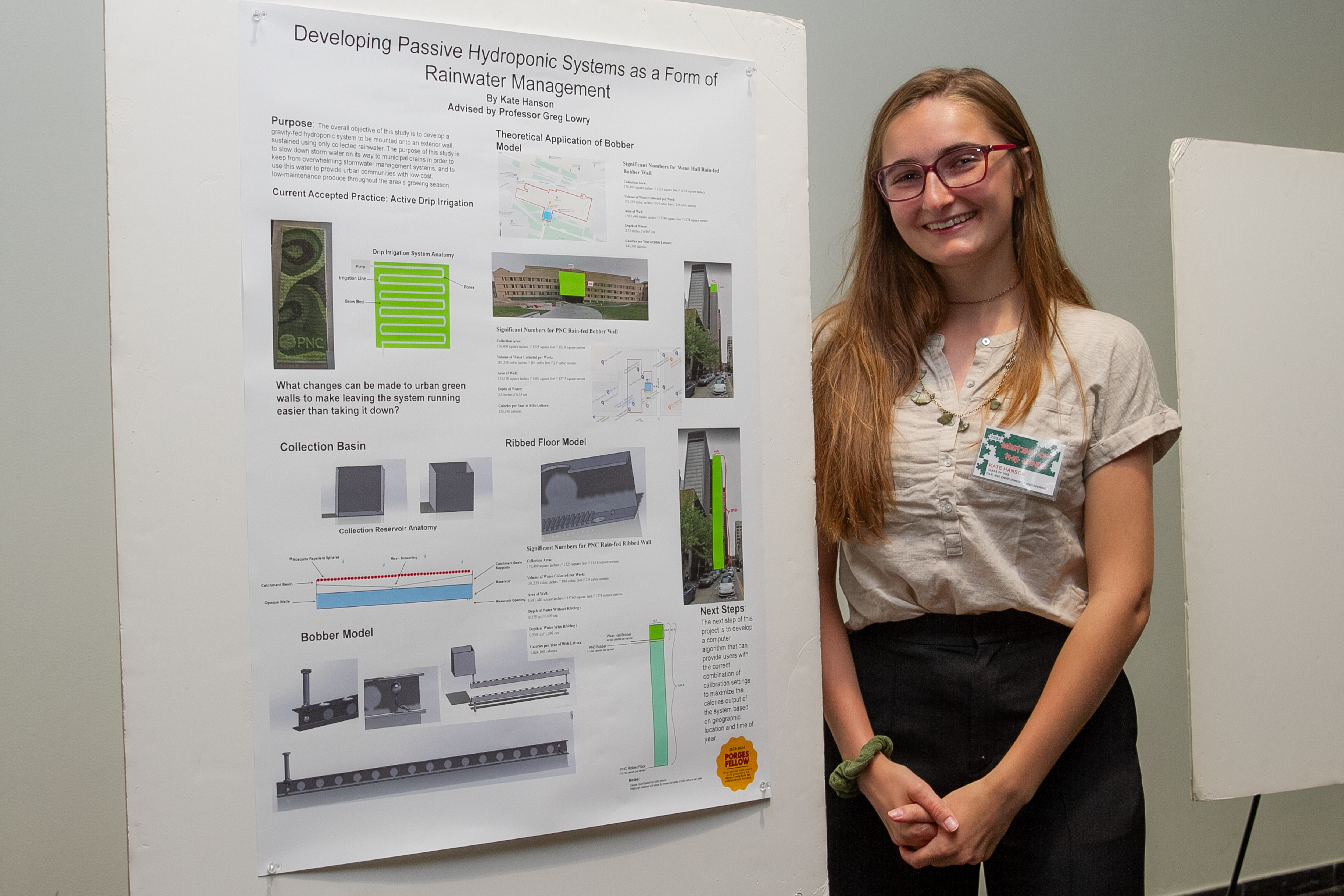 The understanding of stormwater management is shifting, driven by the increased frequency of flooding events due to climate change and the financial implications of ongoing cleanup efforts. Junior Kate Hanson took on a largely self-directed project where she looked for a solution to slow down stormwater heading to municipal systems and use this harvested rainwater in urban communities.
The understanding of stormwater management is shifting, driven by the increased frequency of flooding events due to climate change and the financial implications of ongoing cleanup efforts. Junior Kate Hanson took on a largely self-directed project where she looked for a solution to slow down stormwater heading to municipal systems and use this harvested rainwater in urban communities.
Her project resulted in an exterior gravity-fed hydroponic system, sustained using only collected rainwater, that can be scaled for commercial buildings. Hanson has taken this research to CMU Project Olympus, a Carnegie Mellon innovation center, to explore the market potential of this system.
Hanson was awarded runner-up in the Undergraduate Environmental category for her research and project.
Nanoscale Citrus Greening Prevention
Greening, also known as Huanglongbing (HLB), devastates citrus crops, leading to yield loss and tree fatalities, posing a critical threat to the US citrus industry. With current antibiotic treatments failing, researchers are exploring alternative methods to safeguard citrus plants.
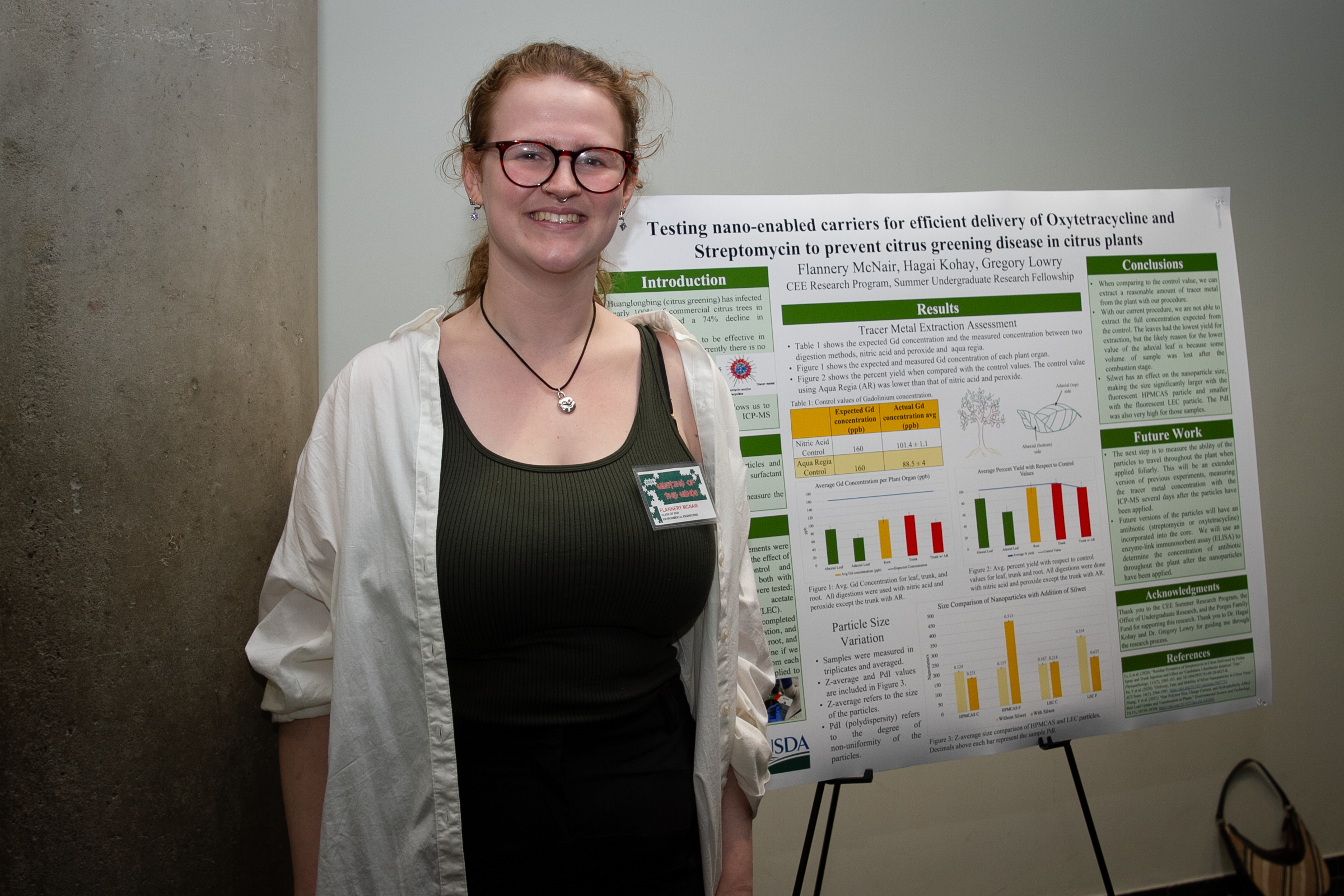 Junior Flannery McNair's project, "Testing Nano-enabled Carriers for Efficient Delivery of Oxytetracycline and Streptomycin to Prevent Citrus Greening Disease," investigates the effectiveness of nanocarriers in delivering antibiotics via citrus leaves. McNair employed specially crafted nanocarriers to target the phloem and roots of orange trees, optimizing antibiotic delivery.
Junior Flannery McNair's project, "Testing Nano-enabled Carriers for Efficient Delivery of Oxytetracycline and Streptomycin to Prevent Citrus Greening Disease," investigates the effectiveness of nanocarriers in delivering antibiotics via citrus leaves. McNair employed specially crafted nanocarriers to target the phloem and roots of orange trees, optimizing antibiotic delivery.
McNair tracked nanoparticles through plants using Inductively Coupled Plasma Mass Spectrometry (ICP-MS) and gadolinium salt and assessed their movement post-application. She also delivered vanadium, a beneficial element for plant growth, via nanocarriers and monitoring their distribution in plants.
This summer, Flannery is undertaking an internship with DC Water to explore the industry side of environmental engineering.
Peptide Nanocarriers Boost Plant Resilience
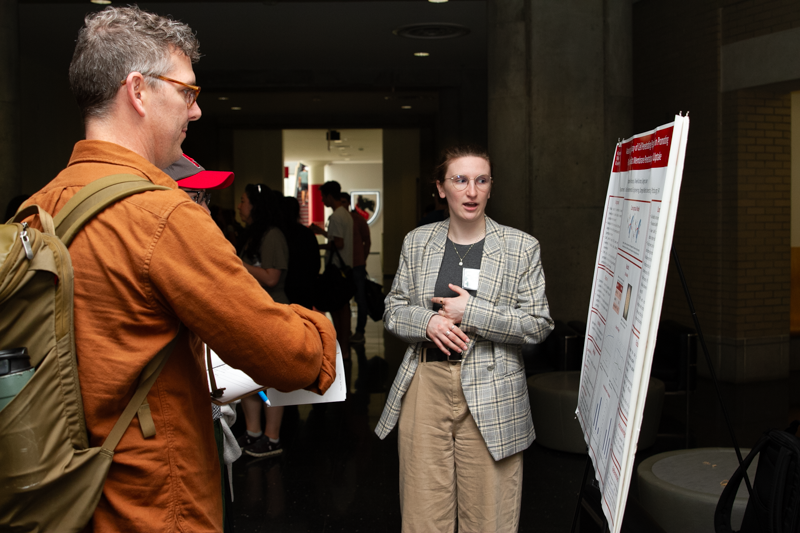 With crop yields decreasing worldwide due to Extreme weather events, researchers are looking for ways they can mitigate these stressors. Environmental Engineering junior Sophie Vincens collaborated with Professor Greg Lowry to explore how polymer nanocarriers can assist plants in coping with climate-induced stress.
With crop yields decreasing worldwide due to Extreme weather events, researchers are looking for ways they can mitigate these stressors. Environmental Engineering junior Sophie Vincens collaborated with Professor Greg Lowry to explore how polymer nanocarriers can assist plants in coping with climate-induced stress.
For her project Vincens worked to improve the effectiveness of these nanocarriers by identifying coatings that enable their entry into protoplasts, cells with their walls removed, with a specific focus on targeting chloroplasts. By exposing harvested plant protoplasts to nanocarriers coated with cell-penetrating peptides and using imaging dyes, she investigated the potential for improved plant survival in harsh climates, offering sustainable agricultural solutions globally.
While Vincens began this project last summer, she continued her research this academic year. The project has validated her interest in research, inspiring her to pursue PhD programs to further her education in the field.
Equity in Alaskan Water Quality
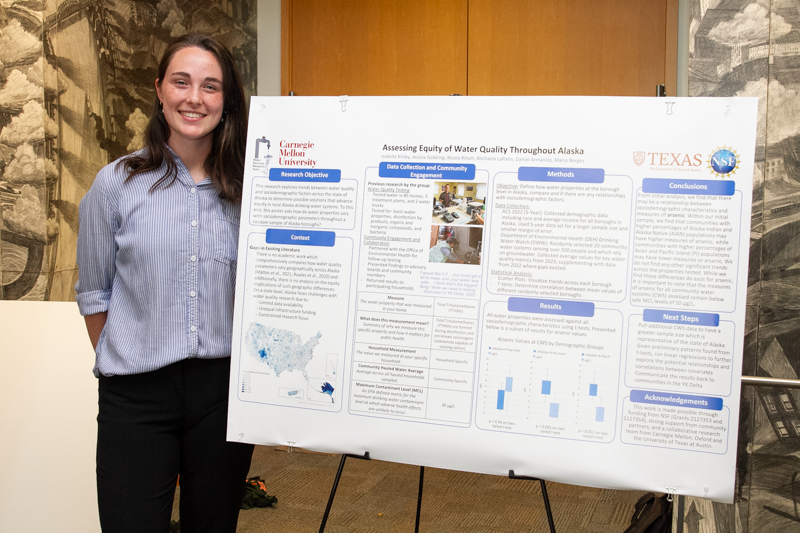 No comprehensive study compares how water quality varies across Alaska or the equity implications of these variations. Junior Isabella Krisky collaborated with Engineering and Public Policy PhD student Nikki Ritsch and researchers at UT Austin to investigate the relationship between water quality and sociodemographic factors across Alaska to address equity issues in rural drinking water systems.
No comprehensive study compares how water quality varies across Alaska or the equity implications of these variations. Junior Isabella Krisky collaborated with Engineering and Public Policy PhD student Nikki Ritsch and researchers at UT Austin to investigate the relationship between water quality and sociodemographic factors across Alaska to address equity issues in rural drinking water systems.
Water samples from various Alaskan boroughs were analyzed, and the team's findings suggested that some communities with more Alaska Indian and Alaska Native people had higher arsenic levels in their water, while others with more Asian and Pacific Island people had lower arsenic levels. Although all samples fell within safe limits, researchers will continue to conduct more in-depth studies to understand water access in Alaskan communities better.
Krisky's contribution to this project has concluded, and the research will continue at UT Austin. She is planning to complete a master’s program and gain fieldwork experience before determining whether to pursue a PhD.
Capstone Success: Effective Project Leadership
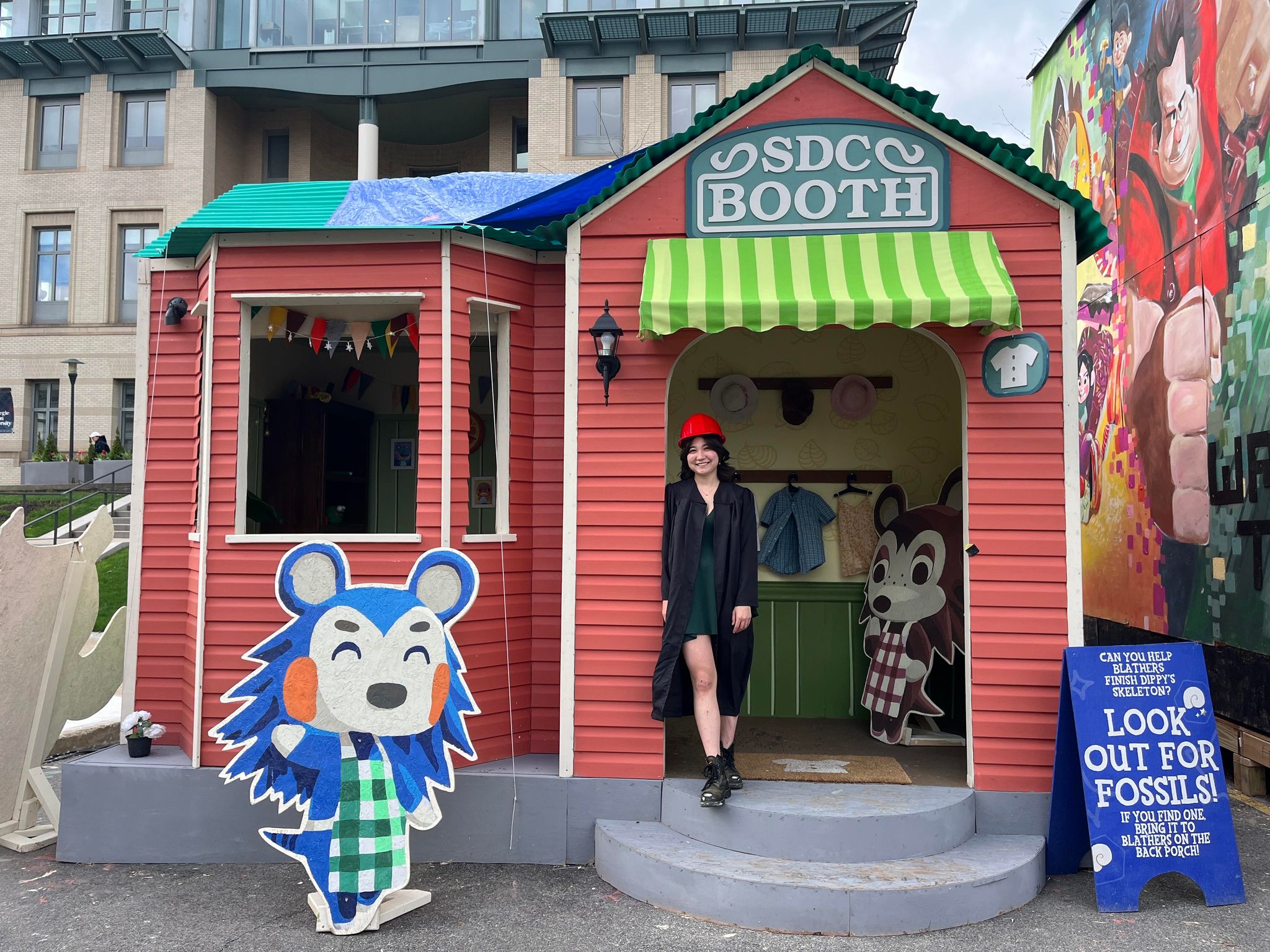 Senior Hikari Harrison presented her capstone project for her Bachelor of Engineering Studies and Art (BESA) with a concentration in Civil Engineering and Technical Direction. For Carnegie Mellon’s Spring Carnival, she led the SDS booth which won several awards: first place for Independent Booth, first place overall, an environmental award for onsite planning, and a second environmental award for energy use.
Senior Hikari Harrison presented her capstone project for her Bachelor of Engineering Studies and Art (BESA) with a concentration in Civil Engineering and Technical Direction. For Carnegie Mellon’s Spring Carnival, she led the SDS booth which won several awards: first place for Independent Booth, first place overall, an environmental award for onsite planning, and a second environmental award for energy use.
Harrison’s Animal Crossing-themed booth began with the goal of creating a standout, dynamic, and eye-catching structure. Challenges arose with sourcing materials, as the team had to recycle aged wood frames and manage a tight budget, exacerbated by weather-related setbacks during build week.
“I really wanted to prioritize our environmental impact through our design,” she says. Harrison prioritized sustainability by repurposing both structural and decorative materials and implementing energy-efficient lighting.
Despite obstacles, the booth’s standout features, such as the bay window and pitched roof, garnered admiration from visitors. At the same time, interactive elements like the fossil hunting puzzle game added to the immersive experience. Most importantly, the project fostered a strong camaraderie among team members, who rallied to overcome challenges and deliver a high-quality booth.